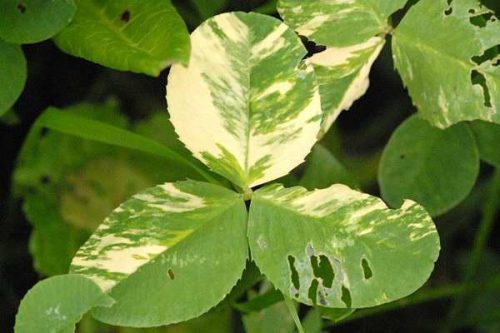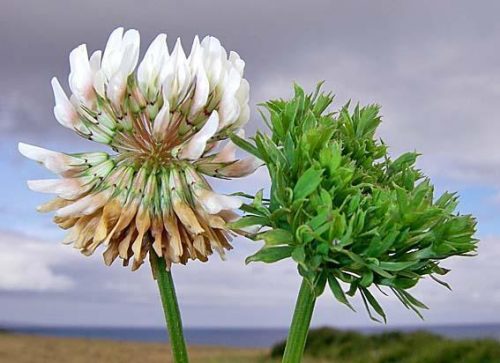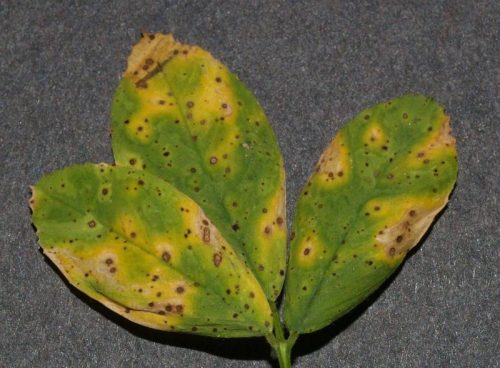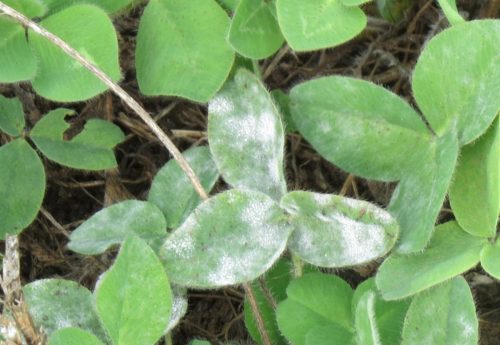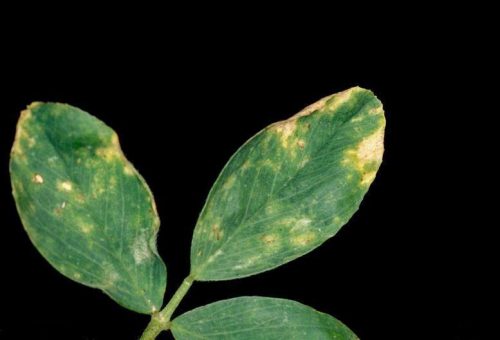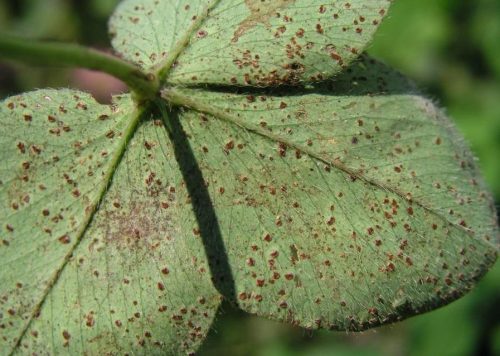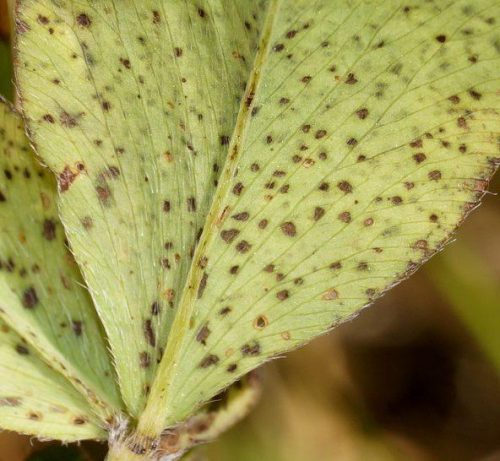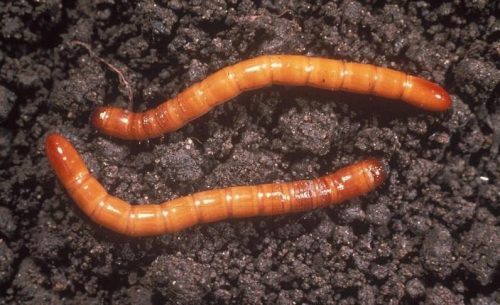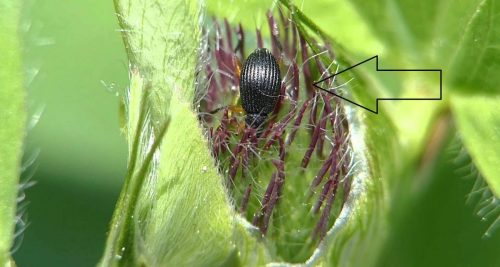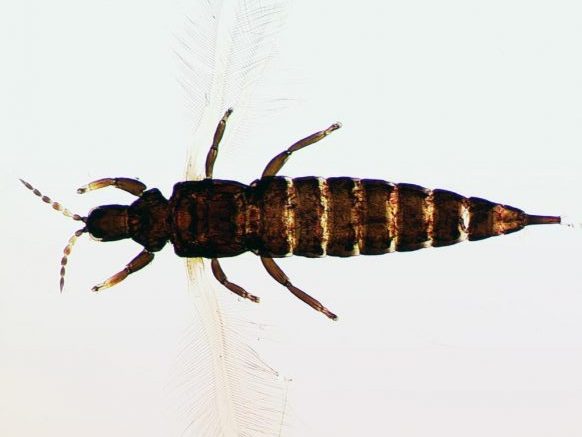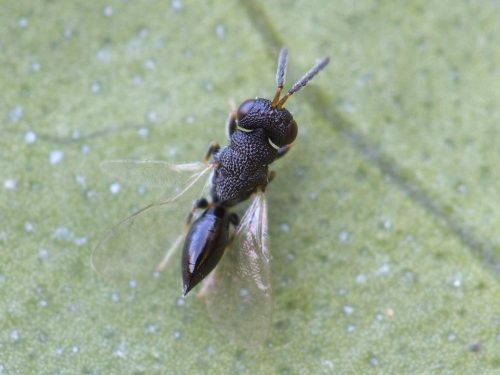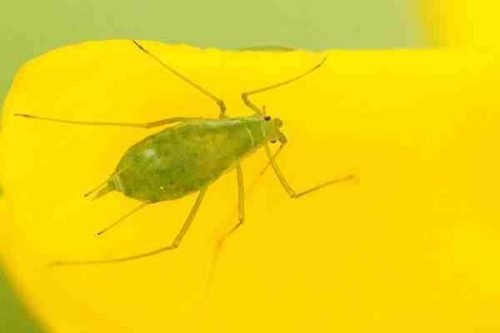Clover treatments, pest and disease control
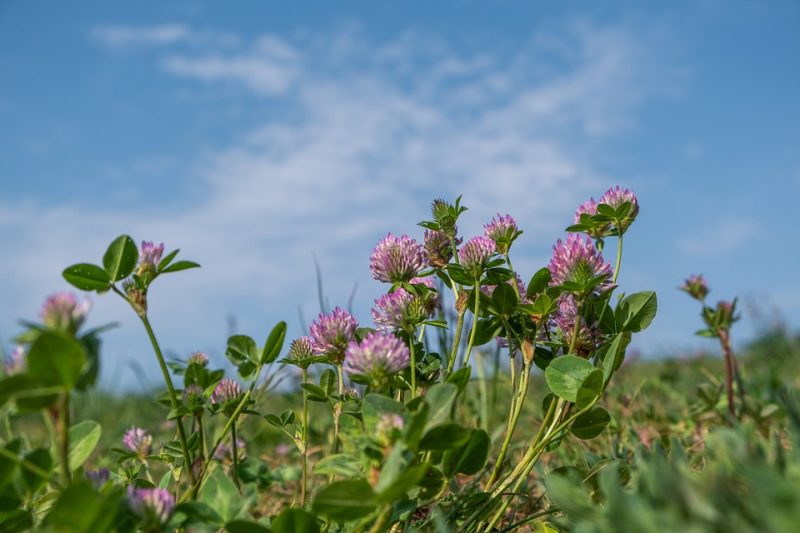
Clover is the common name given to the genus Trifolium, which includes about 250-300 species of legumes. Clover species are grown for fodder, to improve soil quality (they develop nodules, which enrich the soil with nitrogen), for decorative purposes (it can replace lawn), for medicinal purposes, or as a melliferous plant.
The most cultivated clover species are Red Clover (Trifolium pratense) and White Clover (Trifolium repens). Trifolium species are annual, biennial, or perennial plants. A clover crop is viable for 3-4 years.
The main diseases of the clover
Yellow mosaic (Alfalfa mosaic virus)
The disease manifests through alternating green, healthy tissue, with discoloration spots positioned parallel to the ribs, dwarfing the plants and contorting the leaves. The virus is transmitted through aphids, infested seeds, or pollen.
Prevention and control methods:
- using healthy seeds;
- using resistant varieties;
- destroying attacked plants;
- carrying out aphid control treatments.
Clover phyllody (Micoplasma-like organisms)
The disease attacks the flowers, the floral elements being transformed into rudimentary leaves. The disease is transmitted genetically, through seeds, or through certain vectors (cicadas).
Prevention and control methods:
- carrying out treatments with specific insecticides to control cicadas;
- destroying attacked plants.
Bacterial leaf spot disease (Xanthomonas alfalfae)
The disease manifests through the appearance of dark brown, wet spots (representing the bacterial exudate) on the shoots, leaves, stems, and floral elements. The spots evolve, become bigger, and the attacked tissue dries and becomes crumbly.
Prevention and control methods:
- destroying affected plants;
- using resistant seeds;
- carrying out treatments with specific fungicides.
Powdery mildew (Erysiphe martii)
The disease usually attacks the leaves, on the surface of which a white-gray mycelium appears, and the attacked tissue turns yellow. The “felt” becomes dusty and small black dots appear on the surface, which represent the fructification of the mushroom.
Prevention and control methods:
- using resistant varieties;
- in case of a massive attack, early mowing is recommended;
- carrying out treatments with specific fungicides.
Downy mildew (Peronospora trifolium)
Yellow spots appear on the top side of the leaf, and a white-gray felt appears on the underside. The fungus develops in conditions of humidity and high temperatures and it can lead to the plant losing its leaves.
Prevention and control methods:
- in case of a massive attack, early mowing is recommended;
- carrying out treatments with specific fungicides.
Rust (Uromyces trifolii)
The disease manifests at first through the appearance of yellow pustules on the leaves, which later become blackish brown. The fungus attacks the leaves, petiole, and young shoots. They deform and dry out.
Prevention and control methods:
- in case of a massive attack, early mowing is recommended;
- carrying out treatments with specific fungicides.
White sweet clover leaf spot (Pseudopeziza trifolii)
Small, yellow spots appear on the leaves, which grow and develop into large, blackish-brown spots. Black spots appear in the middle of the spots, which represent the fructification of the mushroom.
Prevention and control methods:
- ensuring a good soil drainage;
- in case of a massive attack, early mowing is recommended.
- carrying out treatments with specific fungicides.
The main pests of clover
Wireworms (Agriotes spp.)
These pests can be detected when digging around the stem. The larval stage of wireworms can last between 1 and 5 years, depending on the species.
Prevention and control methods:
- crop rotation;
- carrying out treatments with specific insecticides.
Clover pear shaped weevil (Apion apricans)
It attacks variously cultivated and spontaneous clover species, causing greater damages to red clover. The adults attack the leaves, sometimes the shoots, producing small irregular perforations. The larvae grow inside the flowers, feeding on the inside organs. A single larva can destroy 11-16 flowers.
Methods of control:
- carrying out treatments with specific insecticides at the first appearance of adult insects.
Red clover thrips (Haplothrips niger)
It attacks the inflorescences of different cultivated and spontaneous plant species, especially clover. The adults and larvae sting and suck the intracellular fluid, causing flower sterility.
Methods of control:
- carrying out treatments with specific insecticides.
Clover seed chalcid (Bruchophagus gibbus)
The larvae attack the seeds of different species of clover, both cultivated and spontaneous. One larva develops in one seed. The damage can amount to 10-15% of the seed production.
Methods of control:
- carrying out treatments with specific insecticides;
- in case of a strong attack, early mowing is recommended.
Aphids (Aphis spp.)
They are small insects that can be found on the underside of the leaves or on stems, green or yellow. They can cause the appearance of yellow, distorted spots on the leaves, or the formation of anemic buds. The aphids secrete a sticky substance, which contains sugar and promotes the appearance of sooty mold.
Methods of control:
- carrying out treatments with specific fungicides.














































































































































































































































































































































































































































